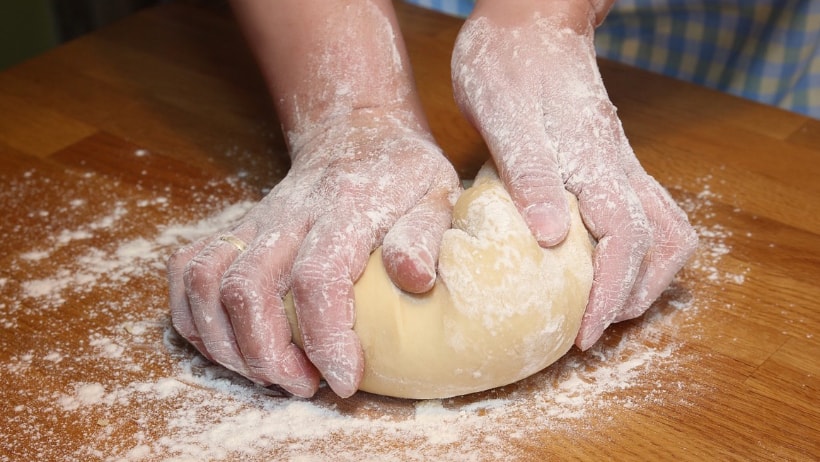On my father’s side of the family, I come from a line of what I like to call “creative in the kitchen” people. My Nana was an excellent cook and baker, and my Uncle Larry is an executive chef who loves recipe development. There are certain dishes that played starring roles in family meals for as long as I can remember. If you ever want to talk food, ask me about rancho beans or my Nana’s peanut-butter-wrapped, chocolate-dipped cherries. Those, by the way, were a featured dessert treat at our wedding reception.

I inherited this duality of a love of the classics plus a willingness to add my own spin. No doubt the basic recipes are fantastic, but I also like to experiment in the kitchen. That might just mean playing around with my challah recipe by adding chocolate chips or a cinnamon sugar crust if I’m in a sweet mood. For me, the recipe on its own is merely the starting point for the adventure, but in general, following the directions will lead you to the expected outcome.
The Torah provides us with a similar guideline. It’s considered the instruction manual for living a Jewish life, or in other words, the recipe book. But one of the biggest puzzles in Judaism is determining how much can we stray from the original recipe and still maintain the integrity of the flavor and structure of the dish, so to speak.
Parshat Vaetchanan, the Torah portion we read this week, continues with the retelling of the laws again here in the book of Deuteronomy. We also read about God’s persistent refusal to allow Moshe to enter the Land of Israel. The Torah then issues a caution to uphold the mitzvot as the key to building an Israelite society. Moshe then sets three cities of refuge, and we receive probably the most well-known instruction in the Torah, the Shema.
Here’s where we step into the kitchen. Chapter 4, verse 2 reads, “You shall not add anything to what I command you or take anything away from it, but keep the commandments of the Lord your God that I enjoin upon you.” Well, that seems clear. Right there the Torah tells us that this is a recipe for the community to follow to a T. And yet, as you may have noticed, the world we live in is different than the biblical world of the Torah. No big shocker. You just have to go back to the red heifer in Bamidbar to see that many of our original mitzvot aren’t applicable today. So we’re left with the dilemma of how to live in a Torah-dictated, post-Torah world when we’re commanded not to change it?
The way we’re able to do this without rupturing the space-time continuum is by acknowledging the truth in the words “etz chaim hi.” It is a tree of life. We see the Torah as a living organism, and we have precedent for clarifying and extending the laws so that the Torah can change and evolve, adapting to present day. The tree that is watered and pruned thrives. The tree that is confined and starved does not.
Going back to the recipe for Jewish living, we’re not taking anything away from the Torah when we apply a modern-day philosophy. Instead, we’re adding to the recipe to ensure its success for years to come. Parshat Vaetchanan warns us about changing something that has lived, breathed, and inspired for so many years because it’s a good basic recipe. But the Torah as a whole teaches us that recipes, like our laws and traditions, are the foundation. They tie us to the past and give us a jumping-off place for the future. Your Judaism means adding dash of this, a pinch of that. The point is just get in the kitchen and cook. No matter what, you’re going to make Nana proud.
– Rabbi Eve Posen
Source: Original Recipe – Parshat Vaetchanan 5776 – Rabbi Eve Posen



